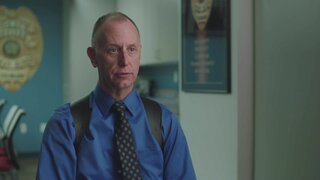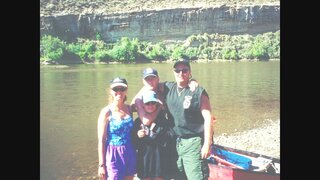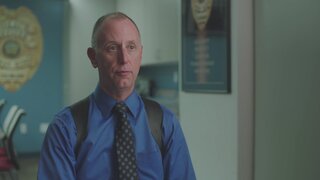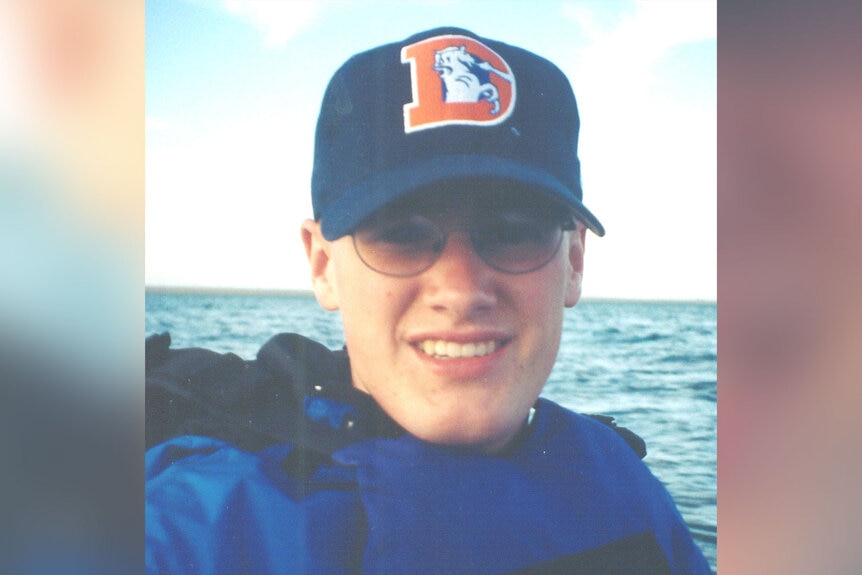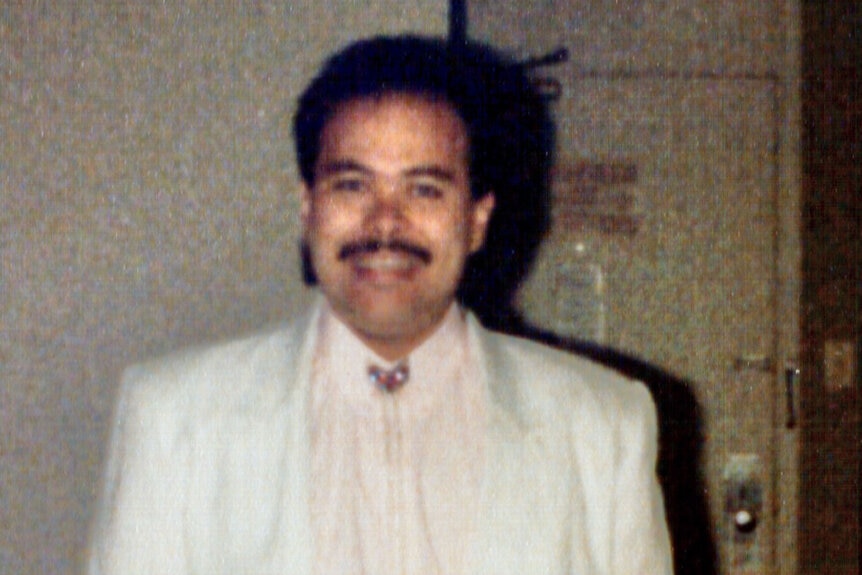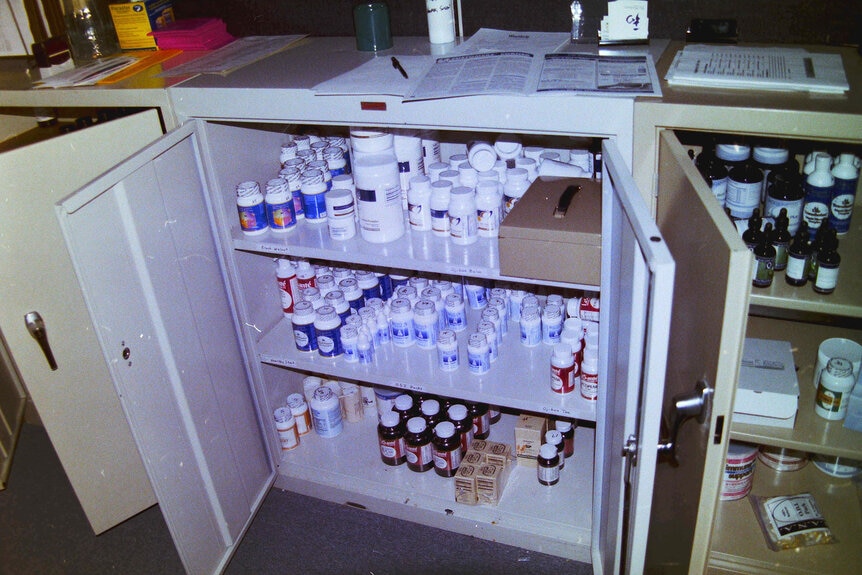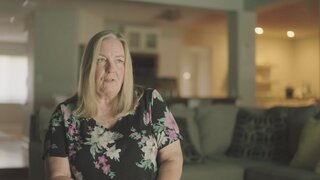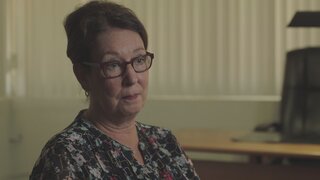Create a free profile to get unlimited access to exclusive videos, breaking news, sweepstakes, and more!
Colorado ‘Doctor’ Caught Prescribing Flesh-Destroying Salve To Cure Cancer
Brian O’Connell had been treating cancer with photoluminescence and black salve, a topical paste that contains alkaloids, which attack and destroy living tissue.
In 2002, 18-year-old Sean Flanagan was rushed to the hospital in Wheat Ridge, Colorado with debilitating pain. Once inside the emergency room, it was determined he had a football-sized tumor in his pelvic region, and he was soon diagnosed with Ewing sarcoma, a rare type of cancer prevalent in children and young adults.
Throughout it all, however, Sean kept his spirits high, the Flanagan family told “License to Kill,” airing Saturdays at 6/5c on Oxygen. They even planned a trip to Hawaii so Sean could “fly over the volcanoes” and “lay in a hammock between a couple of palm trees.”
Over the following months, Sean received chemotherapy and radiation treatments, and he ultimately had the tumor removed along with his lower leg, which had to be amputated due to femoral nerve damage. None of it beat the cancer, and Sean was given four to six months to live.
That is when Sean’s family began looking for anything to save him, and they soon came across the practice of Brian O’Connell, who was the director at the Mountain Area Naturopathic Associates clinic in Wheat Ridge.
“O’Connell described this treatment called photoluminescence. He would draw Sean’s blood out of his body [and] put it through this photoluminescent light,” Sean’s mother, Laura Flanagan, told producers.
During their first meeting, O’Connell appeared experienced and was confident in the procedure, which he claimed would “super oxygenate the blood” and leave Sean “immediately … feeling better,” his father, Dave Flanagan, said.
Photoluminescence, an unproven alternative medical procedure that supposedly cleanses the blood of toxins, is an invasive medical procedure that can only be performed by a licensed medical doctor, but O’Connell was adamant it could cure Sean.
The Flanagan family wrote him an approximately $7,000 check, and they agreed to do the first treatment session during their initial consultation. Sean appeared to be doing fine following the procedure, but he later took a turn for the worst and ended up in the hospital with pneumonia.
Once he was released, O’Connell visited the Flanagan home for Sean’s second treatment on Dec. 17, 2003. During the photoluminescence, Sean started to go gray, and his blood oxygen levels began dropping.
He collapsed in his father’s arms and said, “No more. God, no more.”
“O’Connell had like the deer in headlights look. We thought Sean was gonna die right there,” Laura told “License to Kill.”
The family told O’Connell that Sean was done, and after he packed up his equipment and left, the teenager’s body began shutting down. The Flanagans then sat around Sean’s and said their final goodbyes.
He died within only 18 days of meeting O’Connell, and he never made it to Hawaii.
While his practice seemed highly suspect, the naturopathic “doctor” did not come under official scrutiny until three months later, when a seemingly healthy 17-year-old girl came into the emergency room after suffering a heart attack. With her was O’Connell, who said he had been giving her photoluminescence treatments.
“O’Connell told the ER doctor he was a naturopathic doctor, and at that point, the ER doctor was really worried because he recognized O’Connell didn’t seem to have the credentials necessary to be giving invasive treatment, such as the photoluminescent treatment of the blood. The stuff he’s doing is dangerous,” Wheat Ridge Police Department Sergeant Jonathan Pickett told producers.
Hospital staff then contacted authorities to report O’Connell, and investigators learned this was not the first case in which one of O’Connell’s patients ended up in the hospital. Just two days prior, a 44-year-old cancer patient named Rory Gallegos came into the emergency room.
O’Connell had been treating his colon cancer with black salve, a topical paste containing alkaloids, which attack and destroy living tissue. Although it has since been replaced by safer and more effective treatments, O’Connell prescribed it to Rory to use on his skin.
“At first, it was just a gel that he would put on the outside of his skin, but as the months and weeks progressed, it got darker and darker. It scabbed up, broke open, started to bleed, ooze[d] out,” his brother, Ricco Gallegos, told “License to Kill.”
Rory’s cancer spread to his liver, and on March 23, 2004, he was rushed to the hospital. He died hours later.
With the 17-year-old heart attack patient safe and recovering, authorities opened up an investigation into O’Connell’s practice.
“I found out that a doctor of naturopathy is not allowed to give any invasive treatments such as drawing blood, putting IVs in,” Pickett told produces.
Authorities then executed a search warrant at O’Connell’s office, and inside, they found walls-worth of diplomas, IV stands, black salve, lights for photoluminescence treatment, and even boxes of potassium chloride, which is used for stopping hearts during open-heart surgery.
“This looks like it’s supporting our fears that he was practicing medicine and was not a doctor. These things shouldn’t have been there,” Pickett told “License to Kill.”
Investigators collected the files of approximately 4,000 patients, many which had been diagnosed with terminal illnesses and had been seeking out miracles. Authorities spoke with several family members of patients who had passed away, and it soon became transparent that O’Connell had “made their suffering longer and worse” and that the treatments “ultimately hurt them further,” Pickett said.
All of O’Connell’s degrees and certifications appeared to be from diploma mills, and investigators could not corroborate the existence of any of the organizations where he received them. O’Connell also had several prescription drugs and other licenses to possess and dispense controlled substances.
They later learned that O’Connell had applied for a controlled substances license from The Drug Enforcement Administration under the guise that he was working under a Colorado State University grant to study the effects of specific controlled substances on pigeons.
O’Connell, however, had never worked for a university research project.
“O’Connell was able to get his DEA license through a lot of fraud and a lot of lies. Ultimately, O’Connell is then able to outfit his clinic with these items that he’s not allowed to have, and that’s where O’Connell kept preying on people and basically torturing people for profit,” Pickett said.
O’Connell was then charged with criminal impersonation, theft, practicing medicine without a license, obtaining controlled substances through fraud and deceit, and several assault charges for the treatments of Rory and the 17-year-old girl, Deputy District Attorney George Brauchler told “License to Kill.”
On May 19, 2004, O’Connell was arrested and later posted bond. He was released on the condition he would not commit further crimes or continue to practice medicine.
When the Flanagan family heard the news, they contacted authorities to report Sean’s case. Although his cause of death was “natural causes due to or as a consequence of Ewing sarcoma,” investigators believed his passing could have been expedited by O’Connell’s treatments, and they had the coroner’s office review Sean’s medical records and speak with the doctors who treated him.
They found that basic sterilization procedures had not been followed during his treatments, the procedures were not carried out by a trained medical professional, and the lack of sterilization led to an infection, which could have hastened his death.
“[The coroner] came to the determination that this was not natural … She changed the cause of death from natural to undetermined,” Wheat Ridge Police Detective Mark Slavsky told “License to Kill.”
At the same time, authorities learned that O’Connell was still treating patients, and they set up an undercover sting operation to see if he was still promising miracle cures. That July, a detective posed as a family member of one of the patients being treated at his practice.
During their meeting, O’Connell touted the benefits of black salve in treating cancer, and he said he had taken more than 100 tumors out of patients. O’Connell was arrested a second time and charged with additional counts, including criminal impersonation and practicing without a license, Brauchler said.
As prosecutors were preparing for trial and O’Connell was out on bond, he and his family were spotted outside of their house loading up a cab with suitcases. When questioned, O’Connell said they were on their way to Disneyland, and he was again taken into custody.
O’Connell ultimately took a deal, and he pleaded guilty to criminally negligent homicide, practicing medicine without a license, assault, theft, and perjury, reported local newspaper The Denver Post in 2006.
He was given 13 years in prison, and after completing his sentence, he was released in 2017.
To lean more, watch “License to Kill” now on Oxygen.com.
